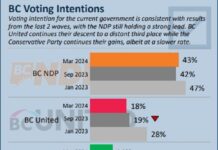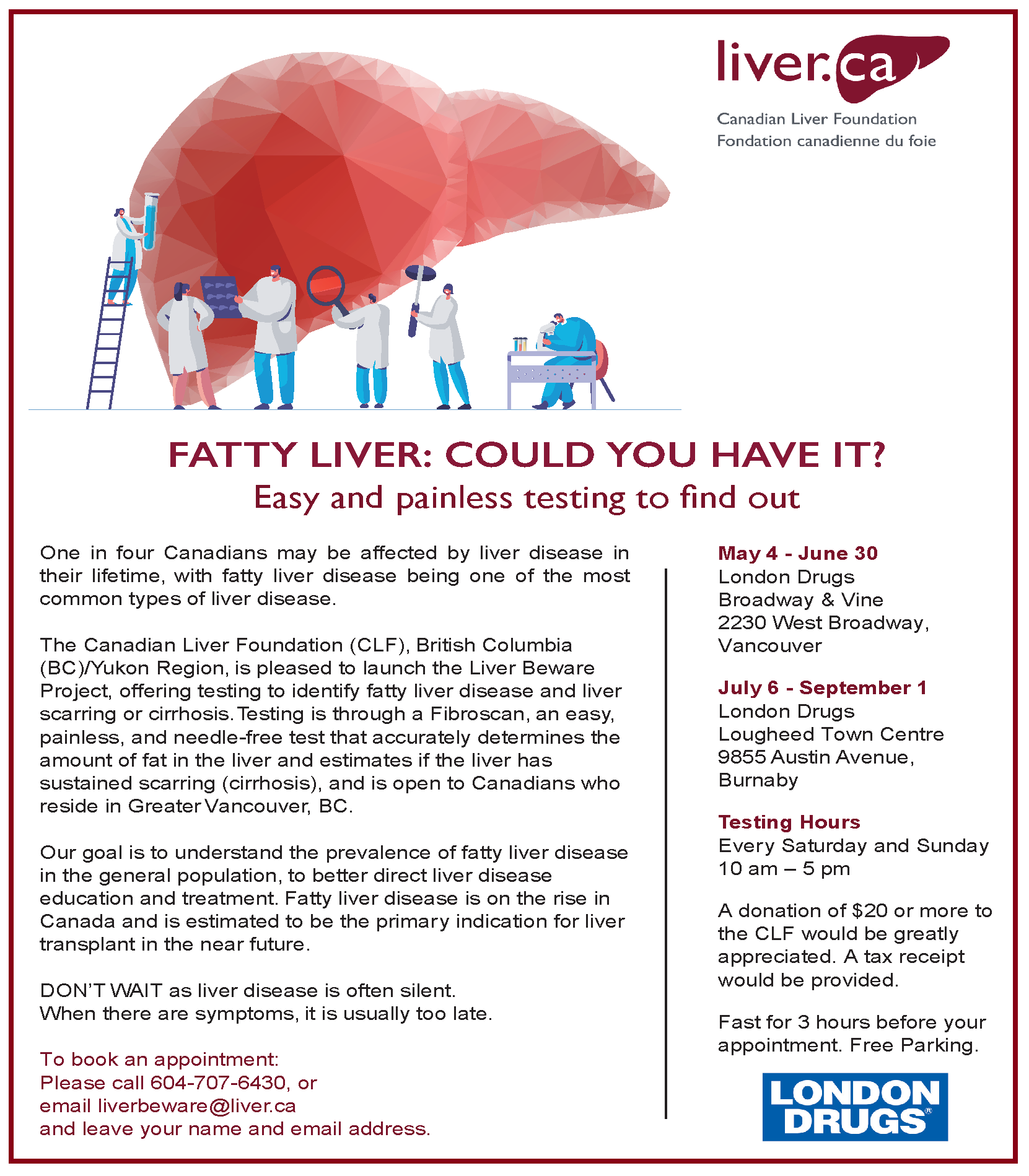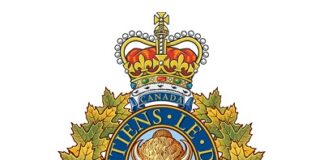BC NDP leads BC Conservatives in Metro Vancouver by 10%, and in Vancouver Island by 20%; races closer in other regions
FIVE months before voters in British Columbia take part in a provincial election, the governing BC New Democratic Party (NDP) remains ahead of the opposition Conservative Party of BC, a new Research Co. poll has found.
In the online survey of a representative provincial sample, 42% of decided voters (-3 since a similar Research Co. poll conducted in April 2024) would support the BC NDP candidate in their constituency, while 32% (+5) would cast a ballot for the BC Conservatives.
BC United—currently the official opposition in the Legislative Assembly—is tied for third place with the BC Green Party (each with 12%). Support for BC United has dropped by three points in a month, while the BC Greens have gained one point. Other parties and independent candidates are supported by 2% of decided voters (+1).
“In May 2023, a third of decided voters in British Columbia (33%) were supporting BC United,” says Mario Canseco, President of Research Co. “A year later, the proportion has fallen by 21 points.”
Only 35% of decided voters who supported the BC Liberals in the 2020 provincial election under leader Andrew Wilkinson are staying with BC United in 2024. More than two-in-five (44%) are now backing the BC Conservatives, while more than one-in-ten (12%) would cast a ballot for the BC NDP.
The BC New Democrats hold substantial leads over the BC Conservatives in Metro Vancouver (40% to 30%) and Vancouver Island (49% to 29%).
The races are closer in the Fraser Valley (NDP 40%, Conservatives 39%), Southern BC (NDP 39%, Conservatives 37%) and Northern BC (Conservatives 40%, NDP 38%).
Across the province, the BC Conservatives are ahead among decided voters aged 18-to-34 (39% to 34%). The BC New Democrats lead among decided voters aged 35-to-54 (38% to 33%) and decided voters aged 55 and over (50% to 26%).
More than two-in-five British Columbians say they would “definitely” or “probably” consider voting for the BC New Democrats (53%, -1) or the BC Conservatives (42%, +1) in the provincial election. The proportions are lower for the BC Greens (35%, -2) and BC United (33%, -4).
Two-in-five British Columbians (40%, +3) say housing, homelessness and poverty is the most important issue facing the province, followed by health care (21%, =), the economy and jobs (15%, -3), the environment (5%, -1) and crime and public safety (also 5%, =).
The approval rating for Premier and BC NDP leader David Eby stands at 54% this month (+3). The numbers are lower for BC Conservative leader John Rustad (37%, +2), BC Greens leader Sonia Furstenau (35%, -2) and BC United leader Kevin Falcon (31%, -5).
The notion of BC United and the Conservative Party of BC merging into a single party before the next provincial election is backed by 33% of British Columbians (-6). Fewer than half of decided voters currently supporting the BC Conservatives (49%, -5) or BC United (47%, -6) are on board.
Rustad is regarded as a better leader than Falcon to attract male voters (29% to 17%), voters aged 35-to-54 (25% to 22%), voters aged 55 and over (34% to 17%), voters in the Fraser Valley (27% to 19%), voters in Southern BC (23% to 20%), voters in Northern BC (30% to15%) and voters in Vancouver Island (24% to 17%) to his party.
The BC Conservative leader is also regarded as having a better chance to serve as opposition leader after the next provincial election (26% to 23%) or form the government (24% to 19%) than Falcon.
Falcon is ahead of Rustad on attracting female voters (21% to 17%) and voters in Metro Vancouver (24% to 21%) to BC United. The two leaders are tied (at 20% each) on attracting voters aged 18-to-34 to their respective parties.
Results are based on an online study conducted from May 13 to May 15, 2024, among 800 adults in British Columbia. The data has been statistically weighted according to Canadian census figures for age, gender and region in British Columbia. The margin of error—which measures sample variability—is +/- 3.5 percentage points, nineteen times out of twenty.














